Spinning Starts Here: Choosing Your First Drop Spindle & Fiber
- Sönna Schuttner

- Jan 5, 2021
- 7 min read
Updated: Aug 6
Simple advice for beginning your yarn-spinning journey on a drop spindle with minimal investment and maximum joy
Are you drawn to the art of spinning yarn, but overwhelmed by all the tools and terms? You’re not alone. Spinning your own yarn can feel like stepping into a whole new world — but I promise, it doesn’t have to be complicated or expensive. In this post, I’ll walk you through how to choose your first drop spindle and some gentle guidance on fiber, so you can get started. I'll also break down some of the vocabulary that can make finding tools and fiber feel like a bigger undertaking than it needs to be.
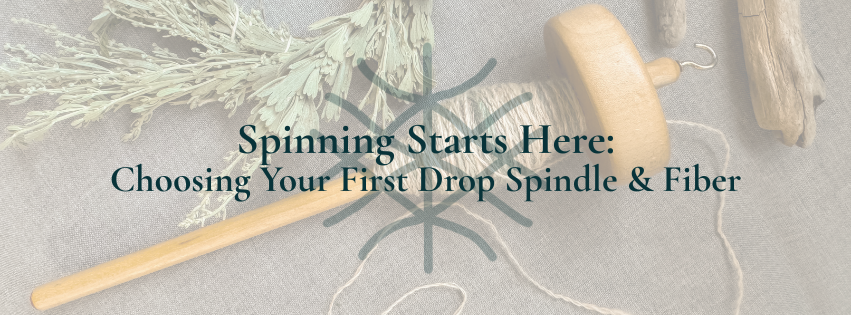
This post is part of Witch Crafting — a project-based blog series from my real life as a fiber artist, knitter, and seasonal maker. I write these notes myself from my corner of the desert — no AI ghostwriting, no ads, just wool, wonder, and community connection. If this post helps you feel braver about trying spinning, I’d love it if you shared it or left a comment. It helps more than you know.
Jump to:
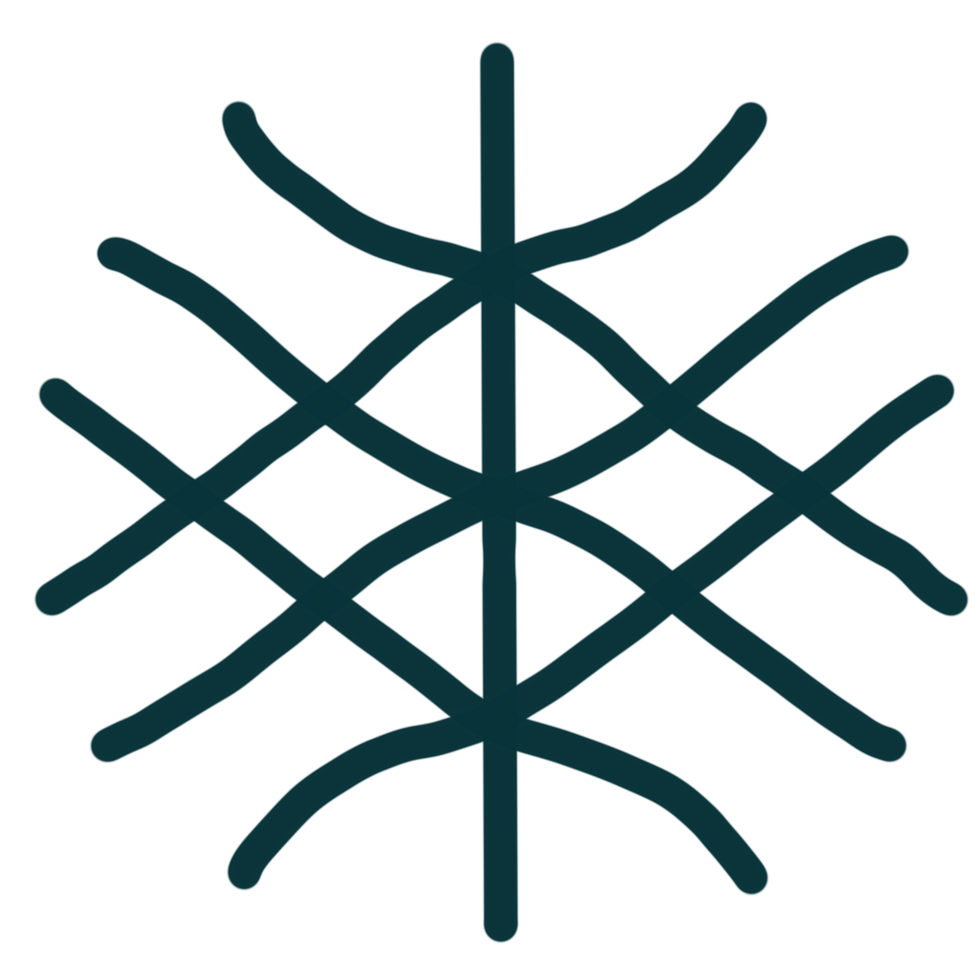
What Kind of Drop Spindle Should I Buy First?
Start simple — you're going to drop it a lot.
There are a lot of spindles out there — carved beauties, wood-burned heirlooms, resin whorls with wildflowers inside… and that’s all wonderful. But if you’re just starting out, go simple. You're going to drop it. A lot.

You can even make one yourself from a potato and a chopstick (seriously, it works!), but I recommend buying a solid beginner spindle to start. You can often find a great one for around $15–$20.
Look for:
A spindle that weighs between 1–2 oz (30–60 g)
A hi-lo spindle can be used as either top or bottom whorl (more on that below)
A simple hook (or notch) — either works fine (more on that below also) but hooks are often easier in the beginning
Brands and Shops I Trust
Ashford and Louet are reliable, beginner-friendly brands
The Fiber Gallery (Seattle-based yarn shop) often stocks basic spindles
Etsy has great options, especially from indie makers and small businesses.
The Evil Empire, Amazon, has workable options and while we don't want to abandon the small businesses for the ease of ordering, there is a time and place and it is good to know all the options.
Stay away from ultra-fancy or decorative spindles for your first — you want something sturdy and not too precious.

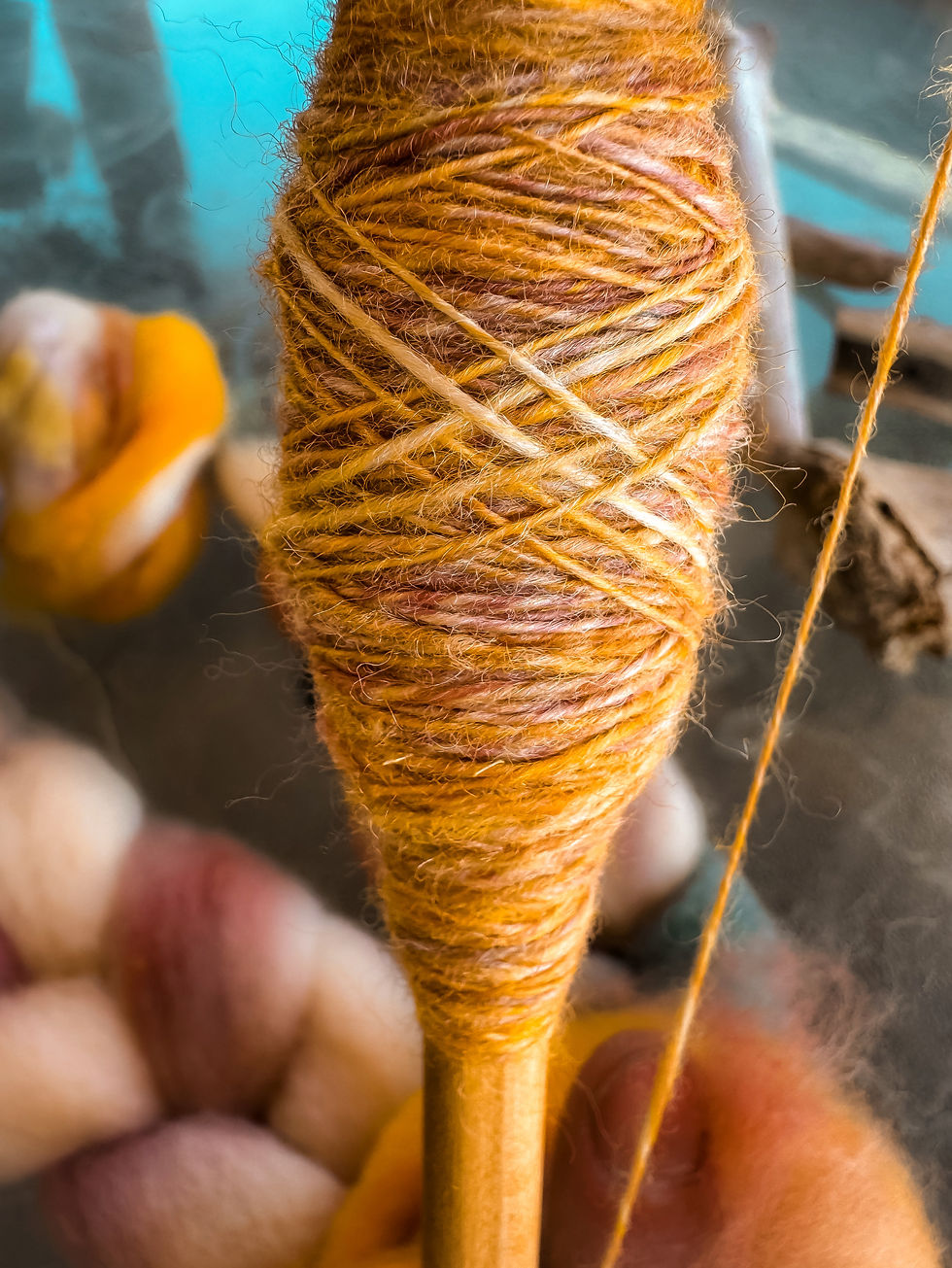
Tips for Choosing Your First Spindle
Top whorl? Bottom? Hook or notch? Here’s how to decide (or how to not worry about it yet).
Top or bottom whorl? The "whorl" is the disk on the spindle and where it is placed on the spindle changes how the weight is distributed and impacts it spins. Bottom whorl spindles tend to be more stable and many find them easier in the beginning. As the spindle fills with yarn, it many spinners find they are better able to wind a more balanced copp (or bundle of yarn) under the top whorl.
Try both if you can! A hi-lo spindle lets you experiment. They have a notch at one end so that the spindle can be used as a bottom whorl, and a hook at the other, allowing it to be used as a top whorl!
Hook vs notch? Don’t stress. Both work. The hook and the notch are both methods for securing your yarn to your spindle so that it can hang and spin as you create more yarn. Most people find the hook easiest because the notch requires a half hitch (knitters know this as the backwards thumb loop) to secure it and for some, that is just one more thing to learn. You might eventually prefer one style over the other, but it won’t make or break your spinning.
Don’t go fancy at first. You will drop it. Choose something that is sturdy, can survive some dings, and which won't be morned should it become abused.
The most important part? Start. You are likely to find that whatever you start with feels most comfortable. The best way to learn is to put twist into fiber with your own hands. Everything else is just flavor and flavor is fun! But not if it gets in the way of actually doing the thing!

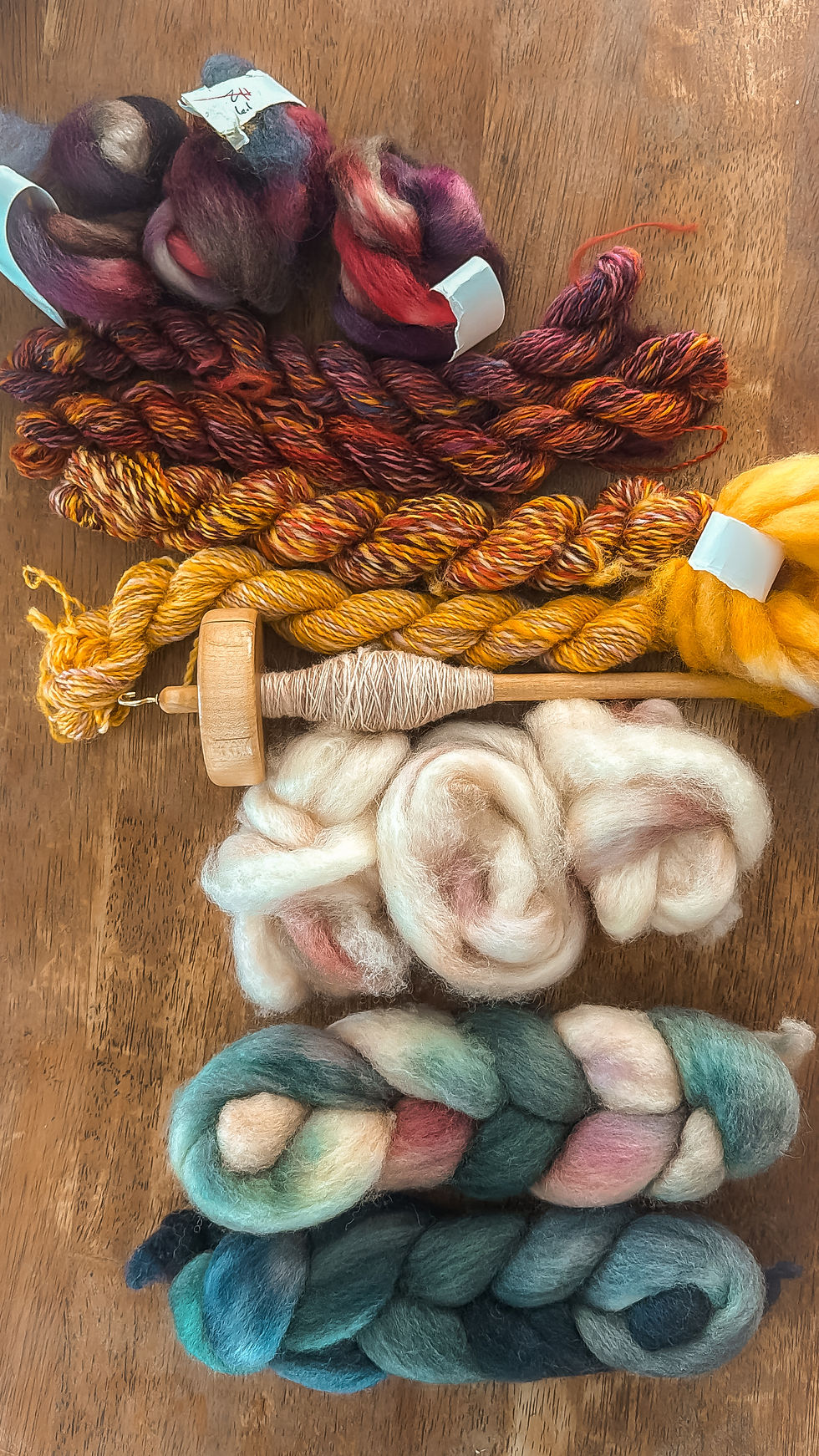
What Fiber Is Best for Beginners?
Go for the fluffy!
There’s no single “right” fiber to learn with, but here’s what I’ve discovered:
Carded wool is fluffier and easier to draft than combed top
Undyed wool is less processed and tends to draft more easily
Dyed fiber (especially in vibrant braids) may feel grabby or slippery, depending on the dyeing method
Carded wool is fluffy and while the fibers are nice and spaced out that ar somewhat jumbled with fibers going in many directions — it's airy, grippy, and easier for beginners to draft.
Combed top has fibers mechanically aligned in the same direction, making it sleek and smooth, but a little trickier to spin because it drafts less easily and can be slippery.
Think of carded vs combed as texture:
Carded wool is bouncy, airy, and forgiving
Combed top is sleek, soft, and smooth but the aligned fibers can be harder to convince that they need to spread out and separate so that we can draft evenly
There’s a whole post coming about carded wool vs combed top, but for now, just know that fluffier = easier. BUT don't confuse "easier" with smooth yarn! When starting out, we are still likely to get that thick-and-thin art yarn look from our first few skeins.

Spindle + Fiber Suggestions
Some beginner-friendly breeds to get you started
Different breeds of sheep produce wool with differing qualities and it can get very wonderfully geeky but where the sheep live, the time of year, food they have access too and level of stress they are experiencing all impact the wool they grow! But for now, lets just keep it simple:
Corriedale or Bluefaced Leicester (BFL) wools are perfect for beginners — a little coarser, yes, but that coarseness helps the fibers grip
Merino is soft and luxurious, but can be slippery — it may not be the easiest for your very first attempts
The Frosted Stitch, Three Waters Farm, Created By Elsie B, and Fossil Fibers are some of my favorite dyers of roving
ColibriStudio and Twisted Urban are on etsy and make the most beautiful batts and rolags
Look for undyed fiber or soft neutrals in batts or rolags if possible as much as those beautiful colors demand our attention, at least play with some undyed wool. The process of dying simply requires more processing and more processing = harder to work with.
A batt is a large, flat, fluffy sheet of carded wool. It’s usually made on a drum carder (center image below) and can be torn into strips or spun from the edge. Batts are airy, versatile, and can hold lots of texture or color blending — like a wool blanket ready to become yarn.
A rolag is a small, rolled-up tube of carded wool, traditionally made with hand cards. More recently the use of blending boards have brought a fresh swirl of color and playfulness to rolags, letting spinners layer texture and hue with intention. It’s like painting with wool—only rounder. The fibers swirl slightly as they’re rolled, making rolags light, lofty and easy to draft from.
Batts = big and flat. Rolags = small and rolled.
Both are beginner-friendly and forgiving, especially if you're just learning to draft.
Got a favorite indie spindle maker or dyer? Drop their name in the comments — I’d love to check them out!


The Final Thread
Spinning yarn doesn’t have to be complicated. You don’t need a studio, a $1000 wheel, or a huge stash to get started (but be careful, that stash has a way of insisting on growing). All you really need is a spindle, some wool, and a little patience. Whether you're making art yarn or, like me when I started, just trying to make any yarn at all, the magic is in the doing, the dropping and the trying again.
Your first hand spun is sure to be a little lumpy, a little lovely, and completely yours.
May your twist hold and your spirit stay curious,
~Sönna 🌀
🌛🌸🌜 If this post stirred your inner spindle witch, I’d be honored if you’d share it with a friend or pin it for later. Comment with your favorite sources for tools and fiber and leave a little star-rating spell below — it helps this craft-spark create a light for others on the fiber path.
Interested in more?
Sign up for the Wool & Wyrd Newsletter and never miss a note!
If you find value in my work and wish to offer reciprocity, you can support my efforts below.
🌀
Explore Sönna's knitting patterns:
🌀
You can purchase the yarn, fiber, and tools you intend to get while financially supporting me at no extra cost through one of my affiliate links:
Thank you for your feedback and support!
Wool & Wyrd is my fiber practice, empowering makers to knit with confidence and intention, shaping not just our stitches, but our connection to Earth, craft, and community.
This post may contain affiliate links. If you make a purchase via one of the links in this post, I will receive a commission at no extra cost to you. All affiliate links are labeled as (affiliate). This blog post contains no ads. However, if you want to support my work in other ways, feel free to fuel me with a kofi.

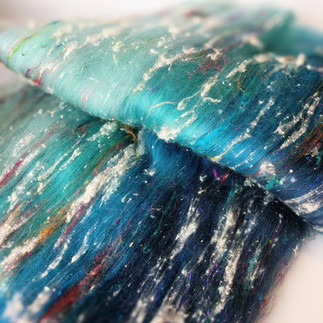

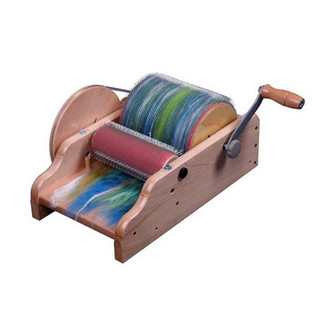






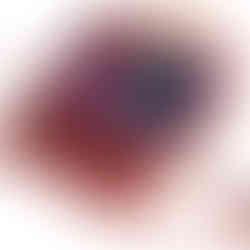




I asked for an e-spinner about 5 years ago, so excited to finally try it! I purchased some lovely hand dyed BFL, and have occasionally taken it out of the box to plug it in and ... I lose my nerve. Every. Damned. Time.
I'm such a wimp!
I’ve been checking out drop spindles! It looks like so much fun! I so want to give it a try!
💕Louise